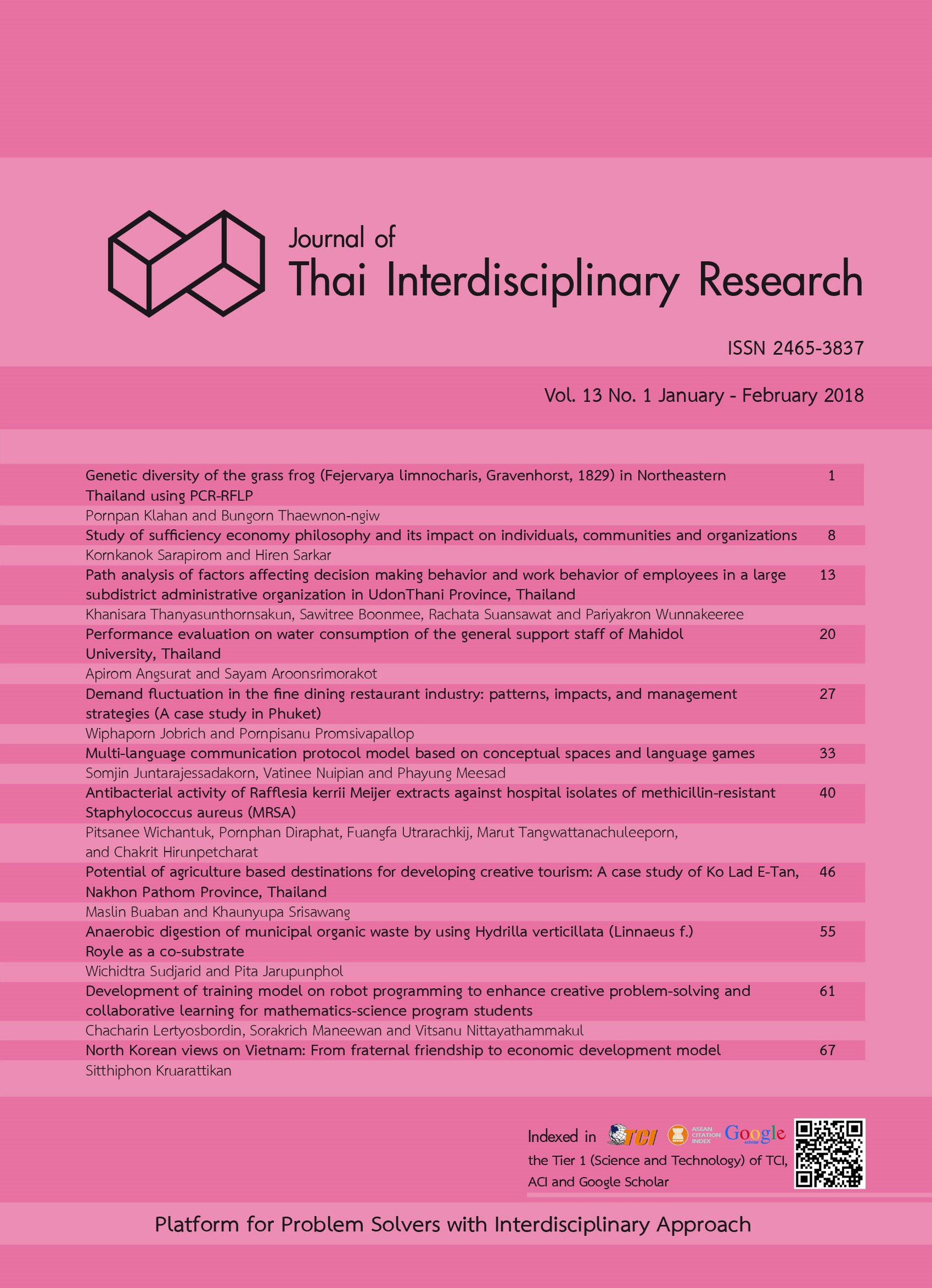Multi-language communication protocol model based on conceptual spaces and language games
Main Article Content
Abstract
Interacting artificial intelligent systems need to understand human language. This paper demonstrates how artificial systems can learn and communicate with each other in three different languages: Thai, Chinese, and English. In this work, we extend a conceptual model based on Language Games and Self- Organizing Map neural networks. In addition, the model proposed includes an important feature that is a dynamic radius for multi-languages communicative interactions between autonomous agents. We present that each innate agent has their own mother tongue or first language according to their parents’ nationality, primarily stores the primitive words in their own language list, and then maps it with other languages. Our proposed model shows the visualized simulation of the potential ways of a communication protocol during Language Games in which autonomous agents can learn and transfer knowledge of different languages between pairwise agents. Finally, the effectiveness of the communication protocol model is evaluated with the 100% success rate to indicate the co-occurrence of word and object convergence matching all three languages.


